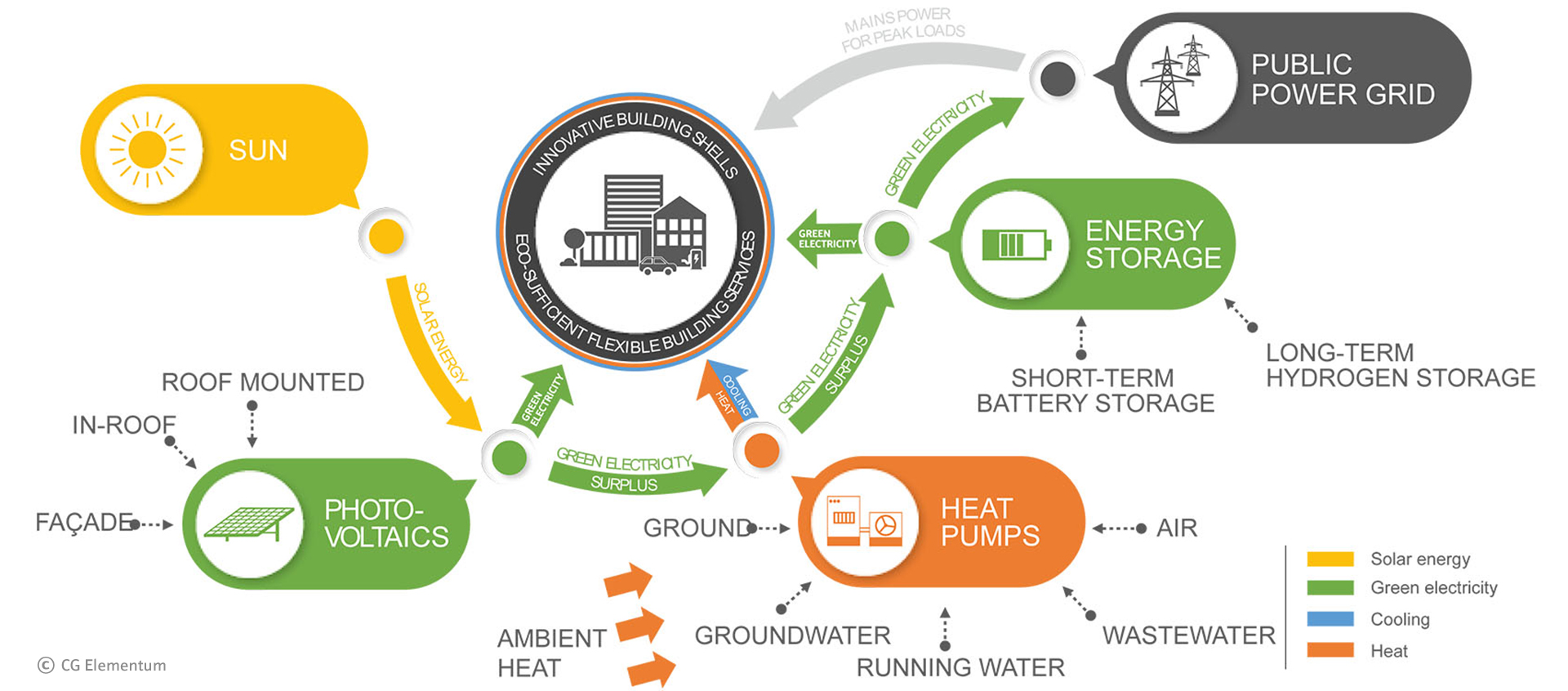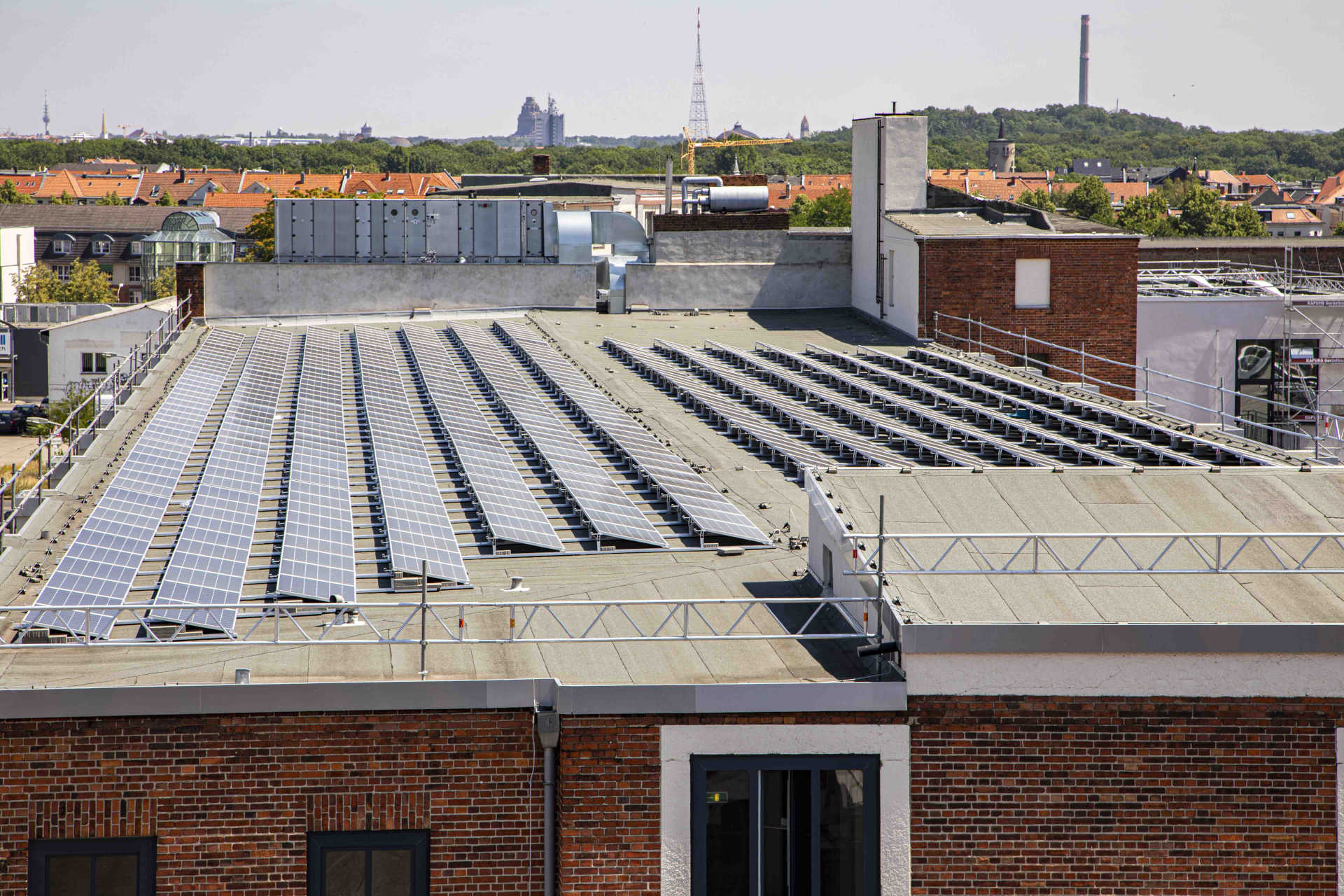Intelligent energy design based on photovoltaics
In order to realize a climate-friendly energy supply in our neighborhood developments, we rely on the off-grid generation of renewable energies at the site: In other words, we do not purchase green electricity, but generate it ourselves in the neighborhood.
In addition to wind energy, we generate green electricity primarily from solar radiation, which provides large amounts of freely available and climate-friendly energy. The sun is thus the engine of our energy supply in the Quarter: For each project, we design an individual energy concept that includes the best possible combination of photovoltaics with other innovative technologies. Only intelligent networking with electrical power consumers, such as heat pumps and storage units, makes the greatest possible use of solar energy possible in the Quarter.

Building efficiency and building-integrated technology
Energy-efficient facades and roofs are the prerequisite for climate-friendly neighborhoods. We design to the highest thermal insulation standards and optimize solar shading in a variety of ways to save cooling energy in summer. Because energy yields and losses fluctuate during the course of the day due to the changing position of the sun, we integrate thermally activatable storage masses by means of intelligent expansion planning and choice of building materials. These storage masses buffer energies for a short time and thus reduce the heating and cooling requirements that would otherwise have to be provided by the systems engineering.

In addition, we use solar energy in facade design to harness solar yields for space heating in winter. With photovoltaic modules on the roofs and elegantly integrated into the facades, we can generate large amounts of energy in an almost climate-neutral manner and thus ensure a large part of the energy supply for the neighborhood. The green electricity then supplies electrical consumers such as heat and cooling generators as well as charging points for electric vehicles.
Using and storing environmental heat sources
In order to be able to provide climate-friendly heating and cooling, heat pumps as well as energy storage and hydrogen technologies such as methane electrolysis are preferably used in our neighborhoods.
Heat pumps are technically feasible at many locations and are a central component of our energy supply to use freely available environmental energies. The heat pump uses these thermal environmental energies for a climate-friendly heating and cooling supply. Environmental heat sources for heat pumps include geothermal energy (geothermal), groundwater (wells), wastewater (wastewater heat exchangers), river water (surface water heat exchangers) or the outside air (air-to-water heat pumps). With ice storage we can collect different environmental heat sources and cool them in summer without electric chillers.

Combined heat and power plants and decarbonization of fossil energies
If environmental heat sources cannot be sufficiently tapped in our neighborhoods and heat pumps are therefore not practical, then we rely on hydrogen-compatible combined heat and power plants. As these can produce heat and electricity simultaneously, they achieve a high level of efficiency. In addition, they can be operated in a climate-neutral manner with green hydrogen.
In order to operate the CHP plants even at present without a green hydrogen infrastructure, we are using electrolysers in selected projects that produce climate-neutral hydrogen from natural gas. This is only possible with a bridging technology, methane electrolysis: This plant generates an energetic field from which the “climate-damaging carbon” can be separated and reused. In this way, we not only protect the climate, but also make carbon available to industry for the production of tires or coatings, for example.

